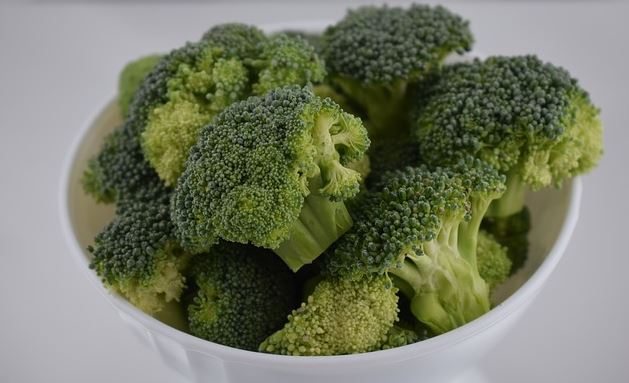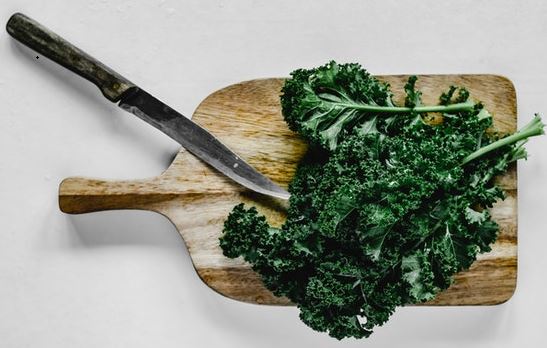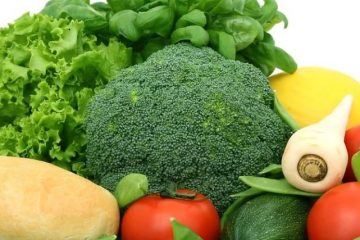When it comes to staying healthy, we often think about what we put into our bodies in terms of food and drink. We focus on eating right and drinking plenty of water. We try to avoid sugary drinks, processed foods, and foods that are high in saturated fats. But what we don’t often think about is what we can do to make sure our bodies are getting rid of everything they need to.
Studies suggest that a diet rich in vegetables and fruits may be linked with a lower risk of heart disease, including heart attack and stroke. Heart disease is the leading cause of death worldwide, so eating foods that may help protect your heart health is essential. Some vegetables are especially beneficial for your heart and circulation. These include spinach, kale, carrots, tomatoes, and garlic.
High blood pressure, also known as hypertension, is a condition that affects a person’s cardiovascular health. While the exact cause of hypertension is unknown, there are certain lifestyle factors that can contribute to its development, such as a high salt diet, lack of exercise, and being overweight or obese.
Keeping your blood pressure within the healthy range will help prevent heart attack, stroke, and other serious health problems. You can manage high blood pressure by watching your diet and making sure you eat enough vegetables to lower your blood pressure naturally.
While there is no cure for hypertension, there are certain vegetables that can help to lower blood pressure levels. Here are some of the best vegetables for high blood pressure that you should incorporate into your daily diet.
Table of Contents
Best Vegetables for High Blood Pressure
Cauliflower
Cauliflower is a vegetable that is often eaten raw or cooked. It has many health benefits and can help lower blood pressure. Some studies have also shown that cauliflower can help with bowel movements.
Cauliflower is often lauded for its health benefits, but did you know that it can also help relieve high blood pressure? While there are many vegetables that have been shown to have positive effects on blood pressure, cauliflower may be one of the best options. Studies have shown that people who consume cauliflower on a regular basis have lower blood pressure readings than people who don’t. This is likely due to the high levels of dietary fiber and vitamin C found in cauliflower.
Containing several anti-inflammatory compounds, cauliflower contains vitamin C and other antioxidants which can help combat high blood pressure. Cauliflower is a low-calorie food with cholesterol-lowering properties that also helps control blood sugar levels and stave off obesity.
Cauliflower is a vegetable known for its ability to help lower blood pressure levels. In addition to this, it is also a good source of dietary fiber, vitamin C, and potassium. It can also help to decrease the risk of heart disease.
This vegetable can be incorporated into many different dishes and can be enjoyed in different ways. For example, it can be roasted, mashed, or even made into pasta.
It’s also an excellent source of fiber and vitamin K, as well as folate, magnesium, phosphorus, potassium and manganese. Like other cruciferous vegetables, cauliflower contains indole-3-carbinol (I3C), a compound which breaks down into 3D which has been shown to lower estrogen levels in women. Estrogen dominance is one of the most common causes of high blood pressure in women; reducing estrogen levels can help bring them back into balance.
Garlic
Garlic may be known for its distinct smell and flavor, but this powerful veggie is also packed with health benefits. Garlic has been used medicinally for centuries to treat a variety of conditions, such as high blood pressure and cholesterol, and it is even thought to boost the immune system. Garlic is also a food that may help you poop. That’s right – this pungent bulb can help relieve constipation.
Eating garlic can help keep your blood pressure low. Garlic is a natural source of a chemical called allicin. Allicin can help prevent high blood pressure. Allicin is also a natural antibiotic.
Many herbs and spices are great for lowering blood pressure, including garlic. Try adding garlic to your diet in one of two ways: Either sprinkle fresh garlic over foods that are already savory, or add crushed or minced garlic directly to your favorite dishes before cooking them.
Tomatoes
Rich in potassium, tomatoes are one of the best vegetables for high blood pressure. Tomatoes contain vitamins A and C, which help keep your blood vessels healthy. The phytonutrients lycopene and beta-carotene found in tomatoes are also believed to have antioxidant properties that can protect your cells from damage.
Tomatoes have been shown to have a significant impact on blood pressure. In fact, a study published in the journal Phytomedicine found that those with the highest blood pressure who ate the most tomatoes had a 37 percent decrease in their blood pressure readings.
Scientists believe that the antioxidants found in tomatoes may help reduce the risk of heart disease, stroke, and even cancer. Additionally, the tomato’s fiber content may help with digestion.
Tomatoes are a great vegetable for people with high blood pressure because they are low in sodium and have a high potassium content. Tomatoes are also a good source of vitamin C, vitamin K, folate, and magnesium.
Tomatoes are a great addition to any diet because they are high in potassium. This mineral is important for regulating blood pressure. In addition, they have other nutrients that can help improve your health, such as vitamin C and beta-carotene.
Include fresh tomato slices or a salad containing tomato slices in your daily meal plan as a way to boost intake of these beneficial nutrients.
Onions
There are several vegetables that are known to be beneficial in lowering blood pressure. For example, onions contain quercetin and kaempferol which have anti-inflammatory properties and have been linked to lower blood pressure.
Onions have been shown to have a number of health benefits, the most well-known of which is that they help lower blood pressure. In addition, onions are beneficial for heart health and help keep the skin healthy.
Here are a few other ways that onions can help improve your life: They are a good source of fiber, helping to keep you feeling full after eating. They also have anti-cancer properties, helping to protect your body from potential tumors.
Onions are a vegetable that is high in both flavonoids and sulfur. These nutrients work together to help lower blood pressure. Additionally, onions contain potassium, which is good for heart health. The sulfur in onions can also help prevent cancer.
Furthermore, a study found that people who consumed more than five servings of vegetables every day had lower blood pressures than those who ate less than two servings daily.
Broccoli
This veggie contains high levels of calcium and is one of the best vegetables for high blood pressure. One cup of broccoli also has about 200 milligrams of potassium and just 20 calories, making it a low-calorie way to improve your heart health. In fact, it’s been shown that eating three servings per week can significantly reduce your risk of developing high blood pressure.
Eat broccoli in soups or salads, or roast some florets on an open flame as a side dish. Broccoli can be easily added to any meal at home or when you’re dining out! If you’re not already adding it to your diet, now’s a great time to start. It’s easy and delicious!

Carrots
This crunchy vegetable is full of potassium, which helps lower blood pressure. Just one cup of cooked carrots contains 1,018 milligrams of potassium—that’s more than half of your daily requirement.
One study showed that people who ate two servings a day had significantly lower blood pressure than those who didn’t eat them at all. For those with hypertension, limit your intake to three-quarters cup per day; it can increase your sodium levels if you eat too much.
Spinach
A study published in “The Journal of Nutrition” found that people who ate spinach regularly had lower blood pressure levels than those who didn’t. The study participants who ate the most spinach had blood pressure levels that were 10 points lower than the participants who didn’t eat any spinach. The researchers believe that the nutrients in spinach may be responsible for the lower blood pressure.
Leafy greens like spinach, Swiss chard, collards and kale are a great source of magnesium. Magnesium plays an important role in blood pressure control by helping muscles relax and allowing blood vessels to dilate. Also, spinach is low in sodium (an attribute you might be surprised to hear about), which means it helps keep your blood pressure down.
A study published in the journal Hypertension found that people who ate a diet high in vegetables had lower blood pressure than those who didn’t. The study participants were divided into two groups – one group ate a vegetable diet high in potassium and fiber, and the other group ate a diet that was lower in potassium and fiber. Results showed that those in the vegetable group had lower blood pressures than those in the other group. The study authors suggest that the diet high in vegetables is a good way to lower blood pressure.
In fact, a study published in The Journal of Hypertension found that adding just 1 serving per day of spinach can lower systolic blood pressure by 2 points. Further studies have shown that those who eat more leafy greens have less hypertension than those who don’t consume vegetables like spinach on a regular basis.
Kale
With only 32 calories per cup, kale is one of our favorite vegetables for lowering blood pressure and improving heart health. It’s high in calcium, potassium, manganese, and vitamins A and C, making it a good choice for low-sodium diets.
And because most people don’t know how to prepare kale properly (steaming is best), you’ll often reap even more of its health benefits—if you can get past its leafy green taste! One study shows that steamed kale lowered systolic blood pressure after just one serving.

Turnip Greens
Turnip greens are a great way to help control high blood pressure. They are high in potassium and fiber, which can help to lower blood pressure. They are also a good source of vitamin C and A, both of which can help to prevent the development of heart disease.
Low in calories and fat, turnip greens contain plenty of calcium and vitamin C and is one of the best vegetables for high blood pressure. A study in Nutritional Review found that people who consumed higher amounts of calcium had significantly lower blood pressure than those who ate less.
Turnip greens are also a good source of potassium and protein. Eating potassium-rich foods may help lower blood pressure by reducing sodium levels in your body. They can also be cooked down and eaten like any other green vegetable on a low-calorie diet.
Thanks for visiting my Weight Loss & Fitness Blog.
Disclaimer: “As an Amazon Associate I earn from qualifying purchases.”


